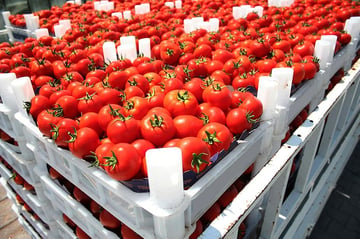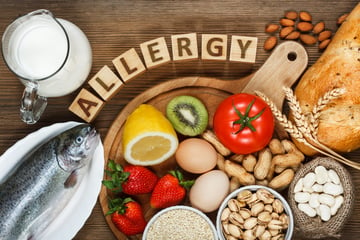In an increasingly complex and global supply chain, ensuring food safety and quality is critical to protect consumers from foodborne illnesses and other risks. For businesses, prioritizing food safety does not only mean you are protecting the health and well-being of your consumers, but it also means that you are taking on a responsibility to comply with industry rules and regulations.
Failing to comply with industry regulations can impact your business significantly – from a costly food product recall to a loss in consumer trust. Further, a food quality mishap along the supply chain or a mislabeled allergen on a product might even result in a visit from your friends at the FDA coming to your site to conduct a food safety audit.
For some businesses, a food safety audit can be a lengthy, overwhelming, and costly process – particularly if your team is not prepared. As such, optimizing your business for food safety audits is key to not only ensuring that your food production processes meet the highest standards of quality and safety, but also that the audit process itself is streamlined, accurate, and as stress-free as possible.
For any business involved in the production, preparation, or distribution of food products, there are several optimizations that can help make your food safety audit process more accurate and streamlined. Here are six tips to help you get started.
1. Establish a Food Safety Plan
A food safety plan is an extension of a Hazard Analysis and Critical Control Points (HACCP) plan and outlines the steps and procedures a business must take to ensure the safety of their products. By having a food safety plan in place – and reviewing and updating it regularly – businesses will have a comprehensive view of potential hazards associated with their products, an understanding of the controls implemented to prevent those hazards from occurring, and documentation of steps and procedures necessary in the event of a food safety issue. Establishing a food safety plan can ensure your audits are more streamlined by providing a clear structure for assessing and documenting your food safety practices.
2. Implement Technology to Automate Processes
Implementing technology and leveraging automation can help optimize your business’s approach to food safety. For example, implementing a system that automatically creates an FDA-compliant label when you input ingredients into a formulation can help to ensure your products are accurate and safe for consumers. Automation can also streamline the process for data collection, analysis, and documentation, providing you with a structured approach to enhanced traceability recordkeeping and enabling a more streamlined process for documentation gathering in the event of an audit or recall.
3. Train Employees on Food Safety Practices
Proper training on food safety practices can help prevent issues that could lead to negative audit findings. It is advisable to establish a food safety team and ensure that those employees are knowledgeable about food safety practices and procedures for your business. In the event of an FDA audit, having a well-informed and equipped team that understands the importance of food safety can ensure a smoother audit process – particularly for potential employee interviews – and reduce the stress burden across the business as a whole.
4. Conduct Mock Audits
Conducting mock audits can help identify issues before they are flagged in an external audit. Mock audits provide a way for your business to identify gaps or potential areas of vulnerability that might result in an actual food safety audit had they gone unnoticed, giving you time to correct or improve those items. Conducting mock audits are one way to regularly assessing food safety practices and ensure your business is well-prepared when an FDA auditor arrives on site (planned or unplanned!).
5. Use Tools to Better Communicate with Suppliers
Effective and seamless communication and collaboration with your suppliers is essential to ensure that you are receiving safe ingredients and products. Additionally, recent regulations, like the FDA’s final rule on the Food Safety Modernization Act (FSMA), Section 204, create standardizations and recordkeeping rules that will rely on rapid identification and communication of recalled or contaminated products. When it comes to consumer safety, speed and organization are paramount.
So, leveraging a solution for supplier management and collaboration provides your business with a tool to monitor supplier performance, document and quickly address quality issues along any point of the supply chain, conduct audits or assessments to identify areas of vulnerability, and automatically assign corrective actions to maintain ongoing compliance. As failure to efficiently communicate and monitor suppliers can result in a costly product recall, leveraging tools to enhance and improve that line of communication is critical in your food safety efforts.
6. Regularly Review, Assess, and Update Policies
Regularly reviewing, assessing, and updating your food safety policies and procedures can help ensure that they remain relevant and effective. Here are some questions you can ask to get yourself started:
- Does your Sanitation Standard Operating Procedures (SSOP) have the most up-to-date protocols for sanitation and maintenance?
- Are you following industry best practices and the latest guidance on Good Manufacturing Practices (GMPs)?
- Is your team familiar with (or aware of) any changes to your food safety plan? How are you communicating those changes?
- Is your team ready for the FSMA 204 recordkeeping requirements that will go into effect in 2026? Have you created a traceability plan? Who will spearhead these changes, and how can you support making the shift? (If you’re not sure where to start, try our free FSMA consult!)
Taking time to assess and re-assess food safety policies can help you identify areas for improvement and implement necessary changes to ensure your business is making every effort to keep products, consumers, and their employees safe. Plus, it can help ensure you are not running into any food safety or quality issues that might warrant a visit from the FDA.
Implement Technology to Streamline Food Safety Processes
These six tips for optimizing your business for a food safety audit should just be one part of your organization’s larger approach to prioritizing food safety. For any business, large or small, taking proactive steps to create a safer, more transparent global food supply chain is essential to protecting consumers, meeting regulatory compliance, and, ultimately, improving your bottom line.
While properly managing and maintaining food safety practices and policies can require a lot of effort, there are industry-leading food safety software solutions that can help. For further guidance on optimizing your business for food safety audits or implementing technology to streamline food safety processes, connect with us today.
Other posts you might be interested in
View All Posts
Supplier Compliance
7 min read
| April 6, 2017
Why Modernization Is Utterly Essential To Incident Management
Read More
Food Industry
6 min read
| September 21, 2022
Five Steps to Prepare for a Food Safety Audit
Read More
Product Formulation
12 min read
| January 27, 2023

